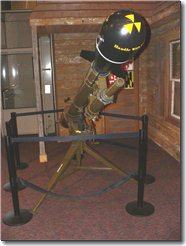|
Radschool Association Magazine - Vol 34 Page 15 |
||
|
Privacy Policy | Editorial Policy | Join the Association | List of Members | Contact us | Index | Links | Print this page |
||
|
|
||
|
Supersonic Douglas DC-8. Rob Cooper-Maitland
We received this from an old mate from our 122.1 days. Even though it’s old news, it is still interesting.
On 21 August 1961, the first supersonic flight by a civil airliner was achieved and a new world altitude record was set for civil airliners during the record-breaking flight. The aircraft involved in this milestone flight was a brand new Douglas DC-8-43 (c/n.45623), powered by Rolls Royce Conway engines. It was owned by Canadian Pacific and allocated the registration CF-CUD.
The record-breaking flight was conceived and commanded by Douglas test pilot Bill Magruder (who had co-piloted the first flight of the DC-8 prototype on 30 May 1958) and was carried out during the pre-delivery flight test program for the new airliner and with the permission of Canadian Pacific. The DC-8 was in completely standard trim (including standard airline interior) apart from some special test and recording equipment that was carried for the record-breaking flight.
The DC-8 took off from Long Beach, California and climbed to a new record altitude (for airliners) of 52,090 feet while positioning overhead Edwards Air Force Base (also in California). When all was ready, the thrust levers were advanced to bring the engines up to take-off power, then the nose was pitched down 30° and held at that attitude while the aeroplane dived and accelerated. At 41,088ft the aircraft reached supersonic speed (at that level, about 650 mph) and maintained Mach 1.012 to 36,000 feet where the nose was gently raised to 8° above the horizon and that attitude held (with the engines still at take-off thrust) until the aircraft decelerated back to subsonic speed.
The airliner reached its highest true airspeed of 662.5 mph (1,066.2 km/h) just before the recovery from supersonic flight. Power was reduced to normal cruise thrust after the recovery and the airliner was flown back to Long Beach. The co-pilot was Paul Patten and flight test engineers were Joe Tomich and Richard Edwards. Throughout the record-breaking run, the DC-8 was accompanied by two 'chase' planes, an F-104 Starfighter equipped with specially calibrated instruments and an F-100 Super Sabre from the USAF Flight Test Centre which acted as a camera ship. Ground tracking facilities were provided as the DC-8 performed its supersonic dive over the Askania Tracking Range at Edwards Air Force Base.
It is interesting to note that there was no airframe buffering during acceleration through the transonic region to supersonic flight, however some airframe buffering did occur during the deceleration period back to subsonic flight.
The flight carried a large number of special first-day airmail covers on the supersonic flight and these were transported to Edwards Air Force Base following the conclusion of the flight to be postmarked at the base Post Office. Click the letter at right for a bigger view.
The DC-8 suffered no ill effects from its historic flight and was delivered to Canadian Pacific shortly afterwards. During its career with the airline, the supersonic DC-8 logged more than 70,000 hours of flight before it was retired and sold for scrap in 1980. The aircraft carried a special ‘supersonic’ insignia on its vertical tail throughout its service with Canadian Pacific.
You can read further details HERE. |
||
|
Paddy is cleaning his rifle and accidentally shoots his wife. He dials 000. Paddy says "It's my wife, I've accidentally shot her. I've killed her" Operator "Please calm down sir. Can you first make sure she really is dead?" CLICK, BANG! Paddy "OK, done that, what next? |
||
|
Churchill.
RG
Thompson sent us this, it is a speech which was delivered by Winston
Churchill in 1899. It was delivered when he was a young soldier and
journalist. It probably sets out the current views of many today, but is
expressed in the wonderful
Churchillian turn of phrase and use of the English language, of
which he was a past master. Sir Winston Churchill was one of the
greatest men of the late 19th and 20th centuries. He
He died on 24 January 1965, at the grand old age of 90 after a lifetime of service to his country and was accorded a State funeral.
Here is part of the speech:
"How dreadful are the curses which Mohammedanism lays on its votaries! Besides the fanatical frenzy, which is as dangerous in a man as hydrophobia in a dog, there is this fearful fatalistic apathy. The effects are apparent in many countries, improvident habits, slovenly systems of agriculture, sluggish methods of commerce, and insecurity of property exist wherever the followers of the Prophet rule or live. A degraded sensualism deprives this life of its grace and refinement, the next of its dignity and sanctity. The fact that in Mohammedan law every woman must belong to some man as his absolute property, either as a child, a wife, or a concubine, must delay the final extinction of slavery until the faith of Islam has ceased to be a great power among men. Individual Moslems may show splendid qualities, but the influence of the religion paralyses the social development of those who follow it. No stronger retrograde force exists in the world. Far from being moribund, Mohammedanism is a militant and proselytizing faith. It has already spread throughout Central Africa, raising fearless warriors at every step; and were it not that Christianity is sheltered in the strong arms of science, the science against which it had vainly struggled, the civilization of modern Europe might fall, as fell the civilization of ancient Rome."
Sir Winston Churchill; (The River War, first edition, Vol. II, pages 248-50 London)
One nice thing about egotists......they don't talk about other people.
Atomic Ramblings.
Bob Webster
Klaus Fuchs was born in Germany in 1911. He went to college in Germany, joined the Communist party and then had some run-ins with the Nazi Party. So he went to England to study physics in 1933. He got doctorate degrees at the University of Bristol and the University of Edinburgh. Then he taught physics at Edinburgh.
When World War II rolled around in 1939, Fuchs, as a German citizen, spent a few months in detention camps. Some of his colleagues got him released, however, and he became a British citizen and started work on the British nuclear weapons program in 1942.
Earlier, in August 1941, a lady named Ruth contacted Fuchs. Ruth had also been a member of the German Communist party and was then a major in Soviet military intelligence. When Fuchs started his secret nuclear weapons research in 1942, he also started spying for the Soviet Union.
In December 1941, the Japanese attacked Pearl Harbour and the U.S. entered World War II. The Japanese bombed and torpedoed Pearl Harbour, but what is not widely known, they also used midget submarines in the attack.
In 1943, Fuchs went from Britain to Columbia University and Los Alamos, New Mexico to work on the U.S. Manhattan project. He continued to spy for the Soviets, working with other Soviet spies in the U.S. nuclear program. On July 16, 1945 the Trinity Test was conducted and the first nuclear explosion exploded. Actually, it was the first man-made nuclear explosion, the Sun had been at it for a few years already. |
||
|
A portion of the Alamogordo Bombing Range was chosen as the site for the Trinity Test. This section of the test site was located at McDonald Ranch, which served as assembly headquarters for the atomic device. All of these temporary buildings were removed after the test.
(Click on the pic for a bigger view)
|
||
|
Plutonium for the Trinity device was transported to the test site in the back seat or a standard car.
(Click the pic for a bigger view)
|
||
|
Norris Bradbury, group leader for bomb assembly, stands next to the partially assembled Gadget atop the test tower. Later, he became the director of Los Alamos, after the departure of Oppenheimer. Bradbury would serve as the director for several decades.
(Click the pic for a bigger view) |
||
|
"Jumbo" atomic device being positioned for "Trinity" test at Alamogordo, New Mexico.
(Click the pic for a bigger view)
|
||
|
A few weeks later, the U.S. dropped nuclear bombs on the Japanese cities of Hiroshima and Nagasaki. Around 200,000 people were killed, including those who died within a few months of the bombs. As bad as this is, it almost certainly saved many more lives than this by ending the war. Japan had already lost over 2,000,000 military and 500,000 civilians in the war, with about 200,000 dead in the Battle of Okinawa alone.
In February 1944, when Klaus Fuchs was in the U.S. working on the Manhattan Project and spying for the Soviets, the U.S. landed on Enewetak and took it from the 2,500 Japanese defenders and then built a 6,800 foot airstrip.
After peace broke out in 1945, the U.S. administered the Marshall Islands in the Pacific Ocean, including Bikini and Enewetak Atolls. The U.S. nuclear weapons program went ahead full steam because the Soviets were doing the same and each country was more than a little worried about being blown up by the other. The U.S. used Bikini and Enewetak Atolls for nuclear weapons testing. They conducted 43 nuclear explosions on Enewetak from 1948 to 1958. Luckily, they evacuated the residents to Ujelang Atoll before they started blowing up stuff. They also evacuated the bodies of the U.S. service men buried there during the war. On Bikini Atoll, July 1946, a 23 kiloton sub-surface burst 90 ft underwater was used to test the effects of nuclear explosions on ships, part of Operation Crossroads.
Meanwhile, Fuchs had kept passing nuclear weapons research, designs and other information to the Soviets right throughout the war and also after he returned to the U.K. in 1946. He was finally caught and confessed in 1950. He then identified Harry Gold as a Soviet spy in the U.S., who identified David Greenglass as a spy, who identified Julius Rosenburg as a spy. They were all convicted of spying. Fuchs was sentenced to 14 years in prison, the maximum sentence allowed because the Soviet Union was considered a British ally. Julius Rosenburg and his wife Ethel (Greenglass's sister) were executed in 1953.
In 1952, the first fusion explosion (hydrogen bomb) on earth was detonated on Elugelab Island, one of the islands of Enewetak Atoll. The island was vaporized. The 10.4 megaton blast is considered the first U.S. fusion explosion, but 77% of the 10.4 megaton blast came from uranium fission and only 23% from fusion energy.
In March 1953, the U.S. performed a blast test on a wooden-frame house, 1,100 meters from a 16-kiloton nuclear blast. It didn’t do it a lot of good, and it has now been proven beyond any doubt that if you’re within 1 klm of an atomic blast, you will need better protection than a wooden house.
|
||
|
|
|
|
|
|
|
|
|
|
|
|
|
On May 23, 1953, the world's first atomic artillery shell was fired
from the Army's new 280mm cannon in Nevada. Hundreds of high ranking
Armed Forces officers and
This was considered very bad manners.
Among those exposed to radioactive fallout were the crew of the
Japanese fishing
The U.S. began decontamination of the atoll in 1977. This seems
backwards, but there is some distance in the atoll between the nuclear
test sites and the residences. The decontamination was an extensive
project. They scraped and dug up more than 75,000 cubic meters of
radioactive soil. They mixed this soil and other debris with cement and
dumped it into a blast crater at the north end of Runit Island. The
crater was about 365 feet in diameter and 30 feet deep. The crater
became a mound 25
You can find the crater on Google Earth – look for the Runit Dome.
In 1986 the Marshall Islands, including Enewetak Atoll, became an independent country. In 2000, the U.S. paid $340 million to the people of Marshall Islands for loss of use, hardship, medical difficulties and further nuclear cleanup. In addition, the U.S. pays the Marshall Islands about $6 million per year for education and health programs. About 62,000 people live in the Marshall Islands, less than a thousand of these on Enewetak Atoll.
The U.S. continued above-ground (atmospheric) nuclear tests until 1958, with a total of 192 nuclear explosions. In 1958 the U.S. and Soviet Union stopped atmospheric nuclear tests, each unilaterally. In 1961, the Soviets broke the non-agreement of 1958. On October 30, 1961, they detonated a 50 megaton bomb at an altitude of 13,000 feet, the largest ever exploded on earth. Buildings, both wooden and brick, were destroyed at a test location 55 km away from the blast. Even though it was detonated at 13,000 feet, the bomb created a seismic event of magnitude 5.0 to 5.25. The weapon was a 100 megaton design, but they dampened it by replacing some of the uranium with lead in order to eliminate 97% of the radioactive fallout. In late 1961 and 1962 the U.S. retaliated with 124 atmospheric nuclear tests. Not all of these were huge bombs. The last above-ground nuclear explosion at the Nevada Test Site was a test of the Davy Crockett .02 kiloton warhead in July 1962.
The Davy Crocket had a range of 1.25 to 2.5 miles. It wasn't very accurate and was more deadly from the radiation than the blast itself. It was the sort of weapon you would get someone else to fire. The Davy Crockett was deployed in the U.S. Army from 1961 to 1971.
In the early 1960's it was a wide spread belief that people shouldn't eat snow (in Oklahoma) because of radioactive fallout from Nevada. After 1962, the U.S. continued underground nuclear tests until 1992. Most underground tests were at the Nevada Test Site, although there was a small one in Mississippi (5.3 kilotons) and a big one on Amchitka Island, Alaska (around 5 megatons).
From 1945 to 1962, there were more than 500 nuclear explosions in the earth's atmosphere. |
||
|
Once upon a time a bloke said to a girl "Will you marry me?" The girl said "No" and she lived happily ever after. She went shopping whenever she wanted to, drank vodka with friends, always had a clean house, never had to cook, had a wardrobe full of shoes and bags, stayed skinny and was never farted upon. The End. |
||
|
Back Go to page: 1 2 3 4 5 6 7 8 9 10 11 12 13 14 15 16 17 18 19 20 Forward | ||


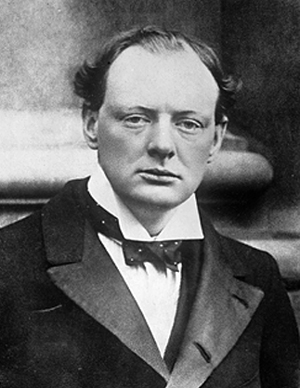 was a brave young
soldier, a brilliant journalist, an extraordinary politician and
statesman, a Great War leader and Prime Minister, to whom the Western
world is forever in his debt. He was a prophet in his own time.
was a brave young
soldier, a brilliant journalist, an extraordinary politician and
statesman, a Great War leader and Prime Minister, to whom the Western
world is forever in his debt. He was a prophet in his own time.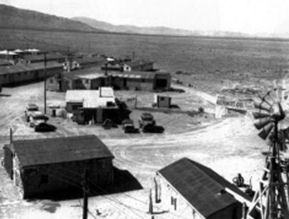
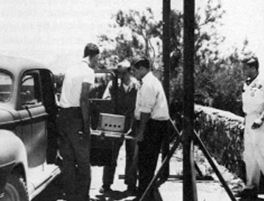
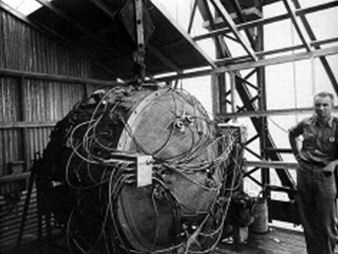
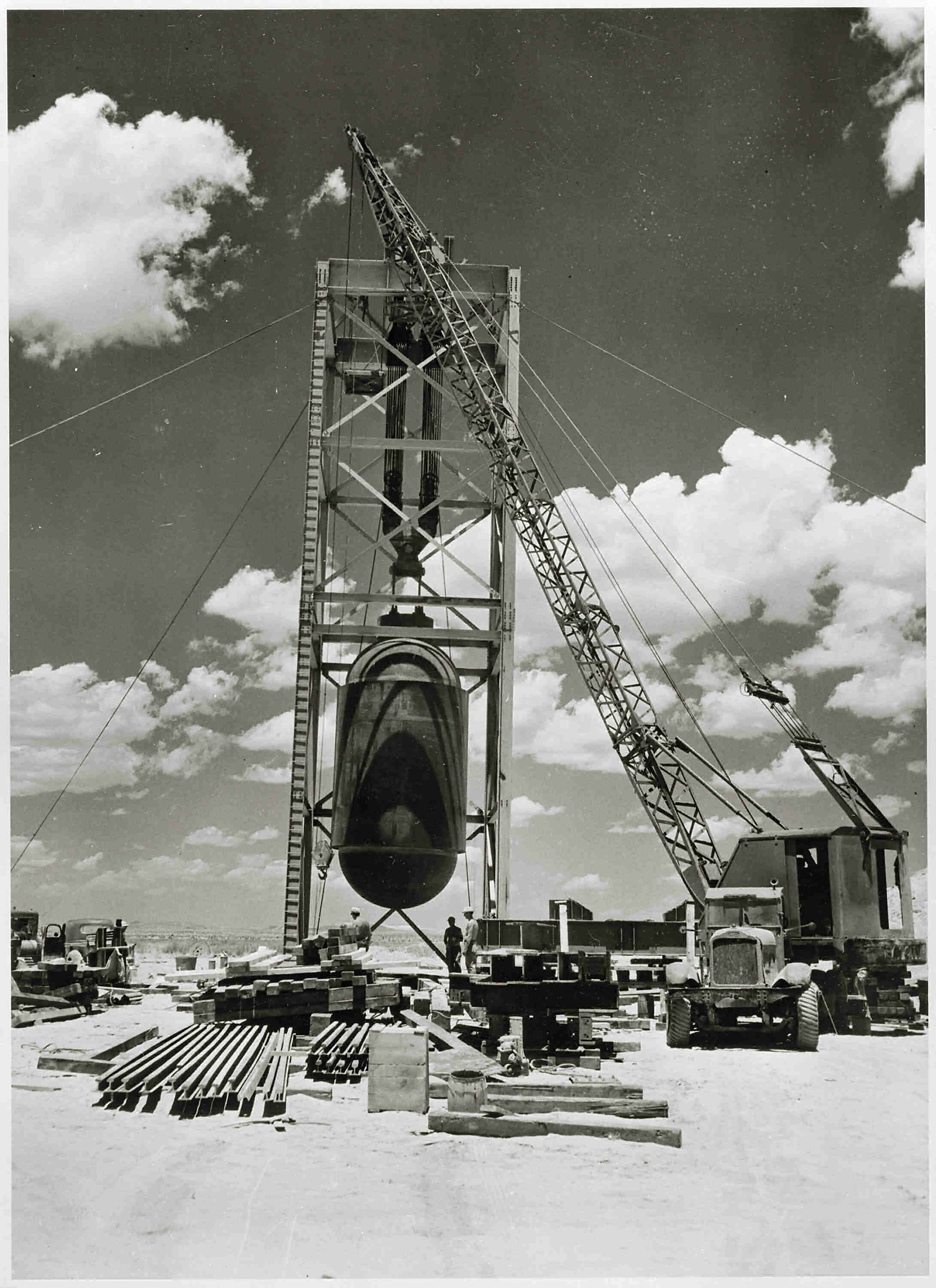
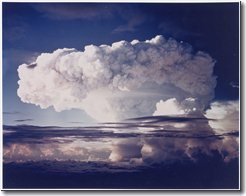
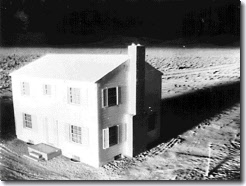
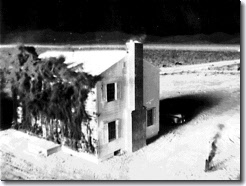
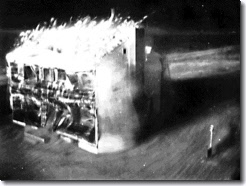
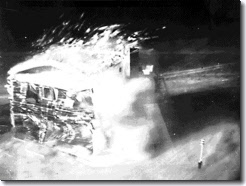
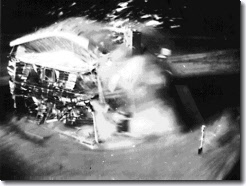
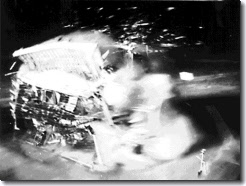
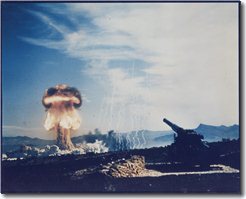
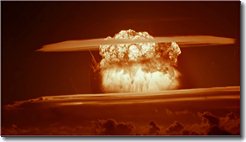 boat
boat
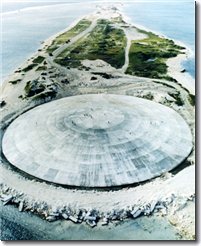 feet high. They capped the mound with an 18-inch layer of concrete and
it became known as Cactus Dome, named after the Cactus "shot" that
created the crater. The Cactus shot was a "small" fusion explosion of 18
kilotons in 1958.
feet high. They capped the mound with an 18-inch layer of concrete and
it became known as Cactus Dome, named after the Cactus "shot" that
created the crater. The Cactus shot was a "small" fusion explosion of 18
kilotons in 1958.